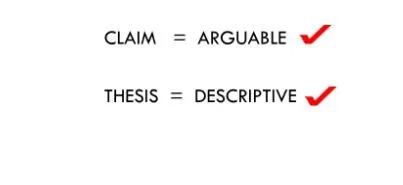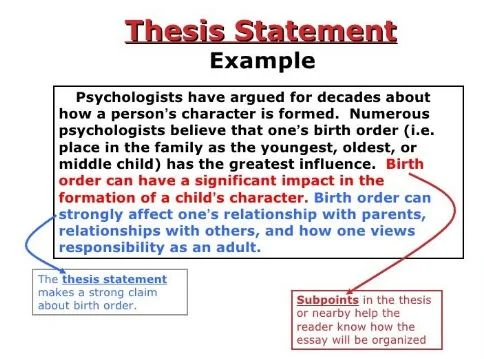Is a Thesis the same as a Claim: How to Write Each

A thesis is a statement that carries the main idea of an essay, paper, or piece of writing to help the writer control the ideas within the paper. It reflects the main argument or point of the writer on a particular topic.
A claim is the beginning or end of an argument that needs to be supported with proper evidence and reasoning. This is because the audience to whom the claim is relayed can challenge it, and therefore, the argument made by the claim must stand.
Is a Thesis the same as a Claim?
Thesis statements are not necessarily claims, but they can be used as claims. For example, a thesis is the main argument in writing, while claims are the points that can be accrued from that statement.

Therefore, the thesis must be in the introductory part of ant piece of writing. Everything that you include in that writing must reflect back to the thesis statement. Backing the argument is what brings up a claim.
Therefore, claims are topic sentences that include the argument that backs the thesis.
They are a sneak peek of what you will include in your essay paragraphs and must be supported by factual information to bring out relevance.
However, a thesis statement can be a claim in argumentative papers. When you are arguing against something, you make a claim that you are supposed to back in the rest of the writing.
The statement is a claim because it should demonstrate the value, policy, facts, and examples that are recent, accurate, and reliable. Therefore, one can refer to a thesis statement as a main claim that sets up the way for other minor claims that support it.
These claims help build a well-rounded argument in the essay by showing that you have considered many possible positions to support your topic.
How to write a Thesis Statement
A thesis statement must be included in essays to provide the reader with a guide of your arguments and opinions in the essay and help you organize and develop your arguments.

A good thesis statement must be coherent, concise, and contentious. It should appear as the last part of the introduction of an essay or research paper.
There are four steps that one should follow when writing a thesis statement:
1. Start with a Question
To write a thesis statement, you need to come up with a question about what you want to find out about the topic you are writing about.
This question is like the initial thesis, which can be referred to as a working thesis because you are in the early stages of the writing process. The question should be based on what you want to say about the topic.
2. Write the Answer to the Question
After identifying the main question that should be asked about the topic, answer the question in detail. The answer to this question is what provides the root that your essay or research paper will follow.
Make the answer simple to ensure that you do not complicate your views. For example, if the question was on what are the effects of the internet on education, you can come up with an answer such as the internet has more negative effects on education today compared to its positive impacts.
3. Develop the Answer
After getting the answer, it is now time to consider why it effectively answers your essay question and how it will help you convince the reader that the arguments you will make in the essay are valid.
To do this, you need to research more so that when you begin to write, the answer will be provided and focused on extensively.
The answer you come up with should also effectively portray the position you have taken in the essay and sketch out the arguments that you will use to support it throughout the essay.
4. Refine the Thesis Statement
This is all about making sure that your thesis statement is strong enough.
Therefore, you must ensure that it tells the readers why you hold the position you have taken about the essay topic, what they will learn after going through your writing, and the key points of your argument or narrative that will be focused on in the essay.
A good thesis statement is not all about stating your position on the essay topic but also summarizing your overall argument on that particular topic. Considering this moves your thesis from weak to strong.
5. Make it Specific
The thesis statement should be straight to the point. Anything that will not be discussed in the essay should not be involved, and only specific evidence should be used to support it.
The language should also be specific. This means that the thesis statement should not report a statistic or a fact but make an assertion.
How to Write Claims

Claim statements in an essay or research paper must be arguable but should be stated as facts. This means that they should be debatable but at the same time show inquiry and evidence.
A claim cannot be a personal feeling or opinion about something. It must be something that is supportable using factual arguments. Therefore, a claim must be specific to assert a focused argument.
Also, claims define the goals, scope, and direction that your paragraphs will take. To write a good claim statement, you should:
Come up with a Strong Argument
A claim must be an argument that is in favor or against the topic of study. This argument should be supported by sufficient evidence to convince the reader that it is valid.
The Claim Should be Stated as a Fact
The claim must look as a fact to the reader. For example, the sentence ‘incarceration of juvenile delinquents is illegal’ is not a claim.
Instead, incarceration of juvenile delinquents is no longer an appropriate punishment in America’ is a factual claim.
The Claim Should be Straight to the Point
When a claim is direct, it shows you all the aspects that you will need to tackle. If it involves a lot of information, you are likely to make a vague argument that may not make sense or convince the reader.




